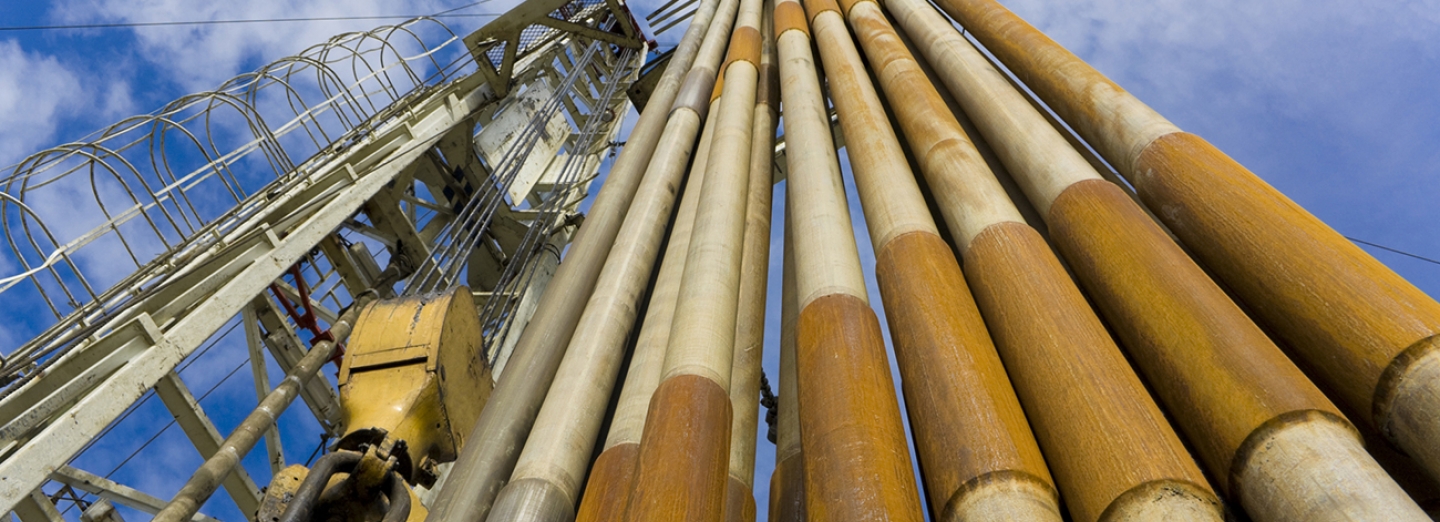Both oil and gas can be retrieved by drilling. The only AER-regulated resource that cannot be retrieved through drilling is coal. Companies must submit an application to us and receive our approval before drilling a well.
How are wells drilled?
In general, companies follow these steps to drill a well:
- A drilling rig is set up at the selected drilling site.
- A bit attached to the end of drill pipe is lowered into the ground to drill into the rock formation.
- When the hole reaches predetermined depths, steel casing is inserted and cemented into the well to protect the surrounding environment.
- Drilling fluid (normally a mixture of additives and water) is pumped through the well to control the formation pressures and remove any rock fragments.
- When the final total depth is reached, the operation switches to a completion phase, where the drilling rig is normally replaced with a completion rig.
Given the mechanical and geological forces at play, wells must be drilled with caution. Our requirements consider the risks of drilling, which include impacts to underground water reservoirs and the possibility of a blowout.
Protecting Albertans and the Environment
Keeping Albertans safe and the environment protected are our top priorities. We have strict drilling waste management protocols; companies must make sure their drilling waste measures at or below our toxicity thresholds—outlined in Directive 050: Drilling Waste Management—to ensure only nonhazardous waste is being returned to land.
Companies must also be careful when drilling critical sour gas wells, which can potentially release large quantities of H2S and cause significant harm to nearby people. Learn more in our EnerFAQs All About Critical Sour Wells.
Our requirements ensure that the environment and people stay protected, and ensures better land reclamation outcomes (i.e., returning land to its original or equivalent state) at the end of a project’s life cycle.
Our Detailed Requirements
- Directive 008 Surface Casing Depth Requirements
- Directive 009 Casing Cementing Minimum Requirements
- Directive 010 Minimum Casing Design Requirements
- Directive 036 Drilling Blowout Prevention Requirements and Procedures
- Directive 050 Drilling Waste Management
- Directive 059 Well Drilling and Completion Data Filing Requirements
- Directive 071 Emergency Preparedness and Response Requirements for the Petroleum Industry
- Directive 083 Hydraulic Fracturing – Subsurface Integrity


